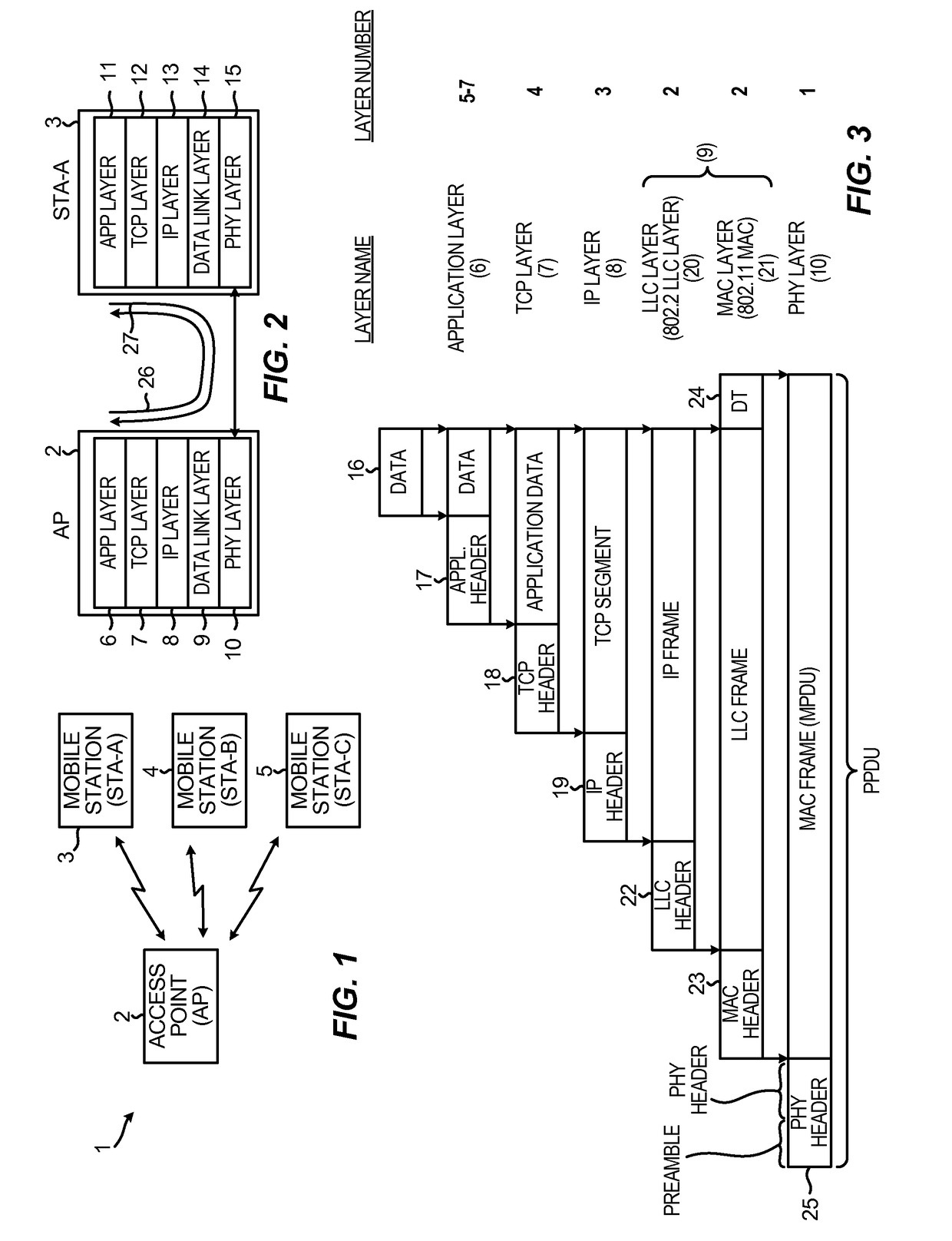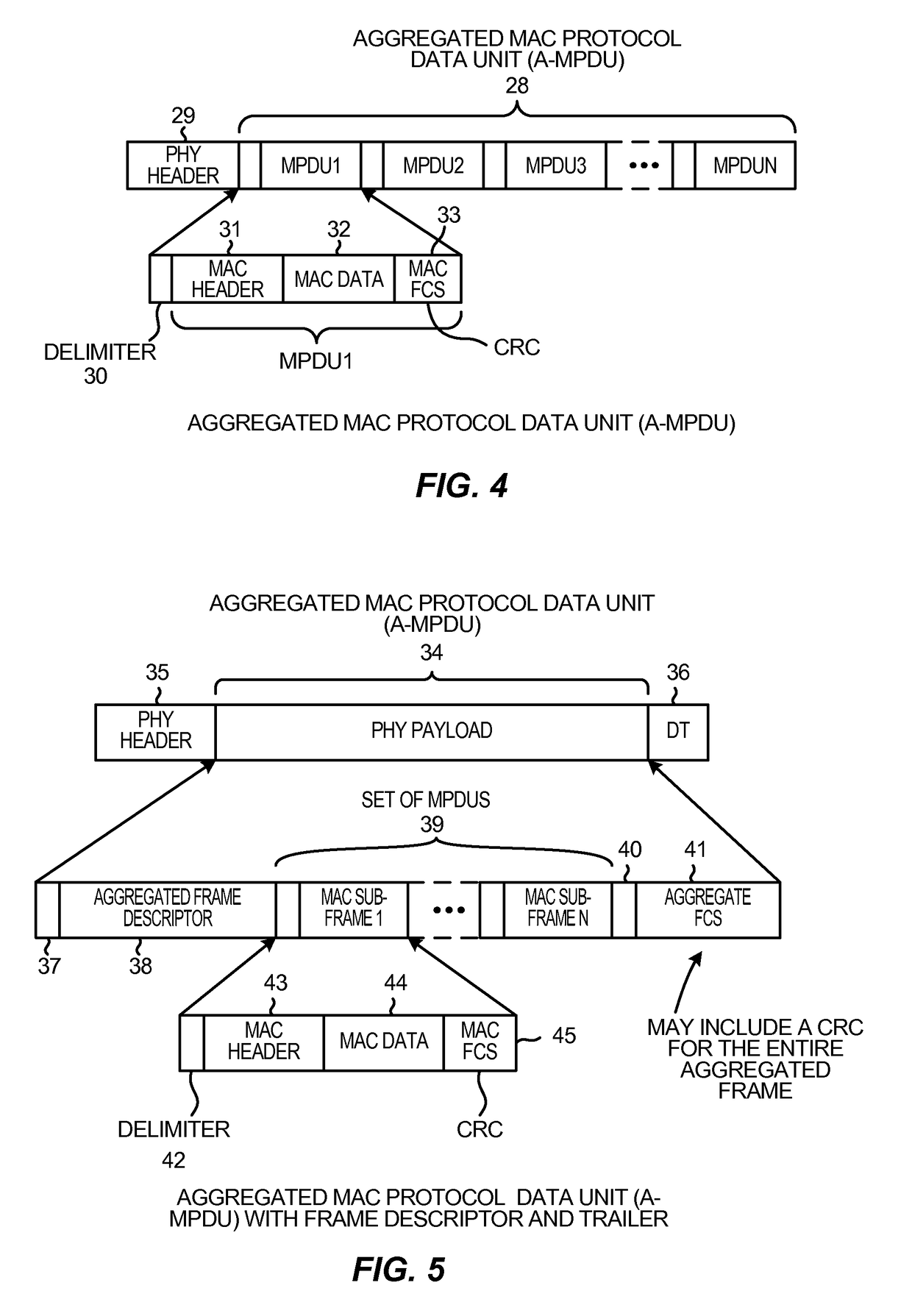Packet-level erasure protection coding in aggregated packet transmissions
a packet and protection coding technology, applied in the field of aggregated packets, can solve the problems of substantial protocol processing overhead and reduce transmission rates, and achieve the effect of reducing transmission rates and reducing protocol processing overhead
- Summary
- Abstract
- Description
- Claims
- Application Information
AI Technical Summary
Benefits of technology
Problems solved by technology
Method used
Image
Examples
Embodiment Construction
[0033]FIG. 1 is a diagram of an IEEE 802.11 wireless communication system 1 employing an Access Point device (AP) 2, a first mobile station device (STA-A) 3, a second mobile station device (STA-B) 4, and a third mobile station device (STA-C) 5. Each station device communicates with the access point using a set of protocols. The protocol processing functionality on the AP is referred to as a stack of protocol processing layers. In the example of FIG. 1, the layers of the stack include an application layer 6, a TCP layer 7, an IP layer 8, a data link layer 9, and a physical layer 10. Similarly, the protocol processing functionality on the STA is referred to as a stack of protocol processing layers. The layers include an application layer 11, a TCP layer 12, an IP layer 13, a data link layer 14, and a physical layer 15.
[0034]FIG. 2 is a diagram showing the protocol stacks in AP 2 and in STA-A 3. The stacks are implemented using combinations of hardware and software. If AP 2 is to send ...
PUM
 Login to View More
Login to View More Abstract
Description
Claims
Application Information
 Login to View More
Login to View More - R&D
- Intellectual Property
- Life Sciences
- Materials
- Tech Scout
- Unparalleled Data Quality
- Higher Quality Content
- 60% Fewer Hallucinations
Browse by: Latest US Patents, China's latest patents, Technical Efficacy Thesaurus, Application Domain, Technology Topic, Popular Technical Reports.
© 2025 PatSnap. All rights reserved.Legal|Privacy policy|Modern Slavery Act Transparency Statement|Sitemap|About US| Contact US: help@patsnap.com



